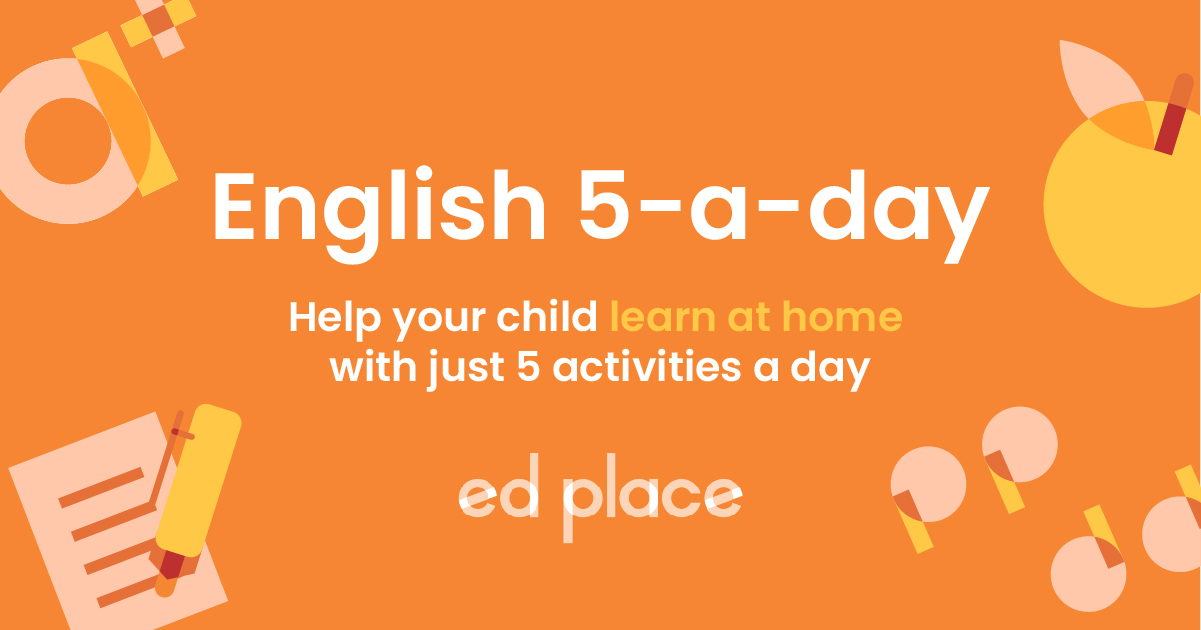
EdPlace's Year 5 and 6 Home Learning: Hyphens and Dashes
Looking for short lessons to keep your child engaged and learning? Our experienced team of teachers have created English, maths and science lessons for the home, so your child can learn no matter where they are. And, as all activities are self-marked, you really can encourage your child to be an independent learner. Get them started on the lesson below and then jump into our teacher-created activities to practice what they've learnt. We've recommended five to ensure they feel secure in their knowledge - 5-a-day helps keeps the learning loss at bay (or so we think!). Are they keen to start practising straight away? Head to the bottom of the page to find the activities.
Now...onto the lesson!
Hyphens and Dashes:
When writing for a purpose, children often have to use a variety of different punctuation. They will be asked to include in their work things such as commas, semi-colons, colons, brackets and ellipsis. Most of these we don’t use ourselves in our daily lives, so how can we remember to include them when helping our children?
One common mistake that children make when it comes to grammar is confusing a dash and a hyphen. They both look the same, but have completely different purposes. However, it is easy to remember what they do and why they are there – let’s have a look at some examples!
1) Understand the difference between a hyphen and a dash
2) Identify when to use them correctly in writing.
3) Apply their learning through example questions, filling in a hyphen or a dash in the correct position.
Step 1 - Terminology
Before we start looking at how they are used in a sentence, let’s look at the definition of each term and break down what they mean. This is important, as it often comes up in various assessments at the end of KS2.
Hyphen - A hyphen joins two words together that describe a noun. It helps to make the meaning of a noun phrase clear and specific.
Dash - A dash creates a break in a sentence and separates bits of information. It is normally used in more informal pieces of writing, for example, a letter to someone you already know.
Step 2 - How do we use hyphens in a sentence?
What it is and how it works:
A hyphen bridges the gap between two words and gives them more clarity. For example, if I was to describe a fizzy drink, I might say it was ‘sugar-free’. This tells me that it contains no sugar without having to write a whole sentence.
Example of how to use it:
A great example that is used in a lot of classrooms is the phrase ‘man-eating shark.’ The use of the hyphen tells us that the shark may enjoy eating humans. However, take out the hyphen and you have ‘man eating shark.’ This could mean the opposite – a person who takes pleasure in munching on a shark! So hyphens are there to add clarity to a noun phrase and make the subject of a sentence a whole lot clearer.
Step 3 - How do we use dashes in a sentence?
What it is and how it works:
Dashes can do the same as hyphens – they give you more information. The key difference is that they split up sentences rather than words.
Example of how to use it:
Let’s say I was describing someone to a friend - to give more information I may use a dash:
The lady – who was short with brown hair – was very chatty and friendly.
The part in between the dashes gives more information about what I’m talking about. If I was giving information about the lady in a more formal context, I might use brackets instead.
To summarise, hyphens join words together that describe a noun. Dashes create a break in a sentence and give more information about something.
Step 4 - Examples
Have a look at the sentences or phrases below; are they using dashes or hyphens?
1. The raspberry ice-cream was really cold to taste.
2. The strawberries- which tasted sweet and fruity- were picked from the farm.
3. My five-year-old brother is really loud!
4. My brother – who is five years old - is really loud!
Challenge question: Punctuate this sentence using dashes or hyphens in the correct place
The grass eating dog who always eats too much took the man’s strawberry ice cream.
Step 5: Persevere and Practice Possessive Apostrophes!
Now, we've covered this together why not assign your child the following 5 activities in this order to see how much they've grasped?
All activities are created by teachers and automatically marked. Plus, with an EdPlace subscription, we can automatically progress your child at a level that's right for them. Sending you progress reports along the way so you can track and measure progress, together - brilliant!
Activity 1 - Using dashes in informal writing
Activity 2 - Mark independent clauses using a dash
Activity 3 - How to use semi-colons correctly
Activity 4 - Using semi-colons correctly 2
Activity 5 - Using semi-colons correctly 3
Answers to the examples:
1) Hyphen
2) Dash
3) Hyphen
4) Dash
Challenge question: The grass-eating dog – who always eats too much – took the man’s strawberry ice-cream.








